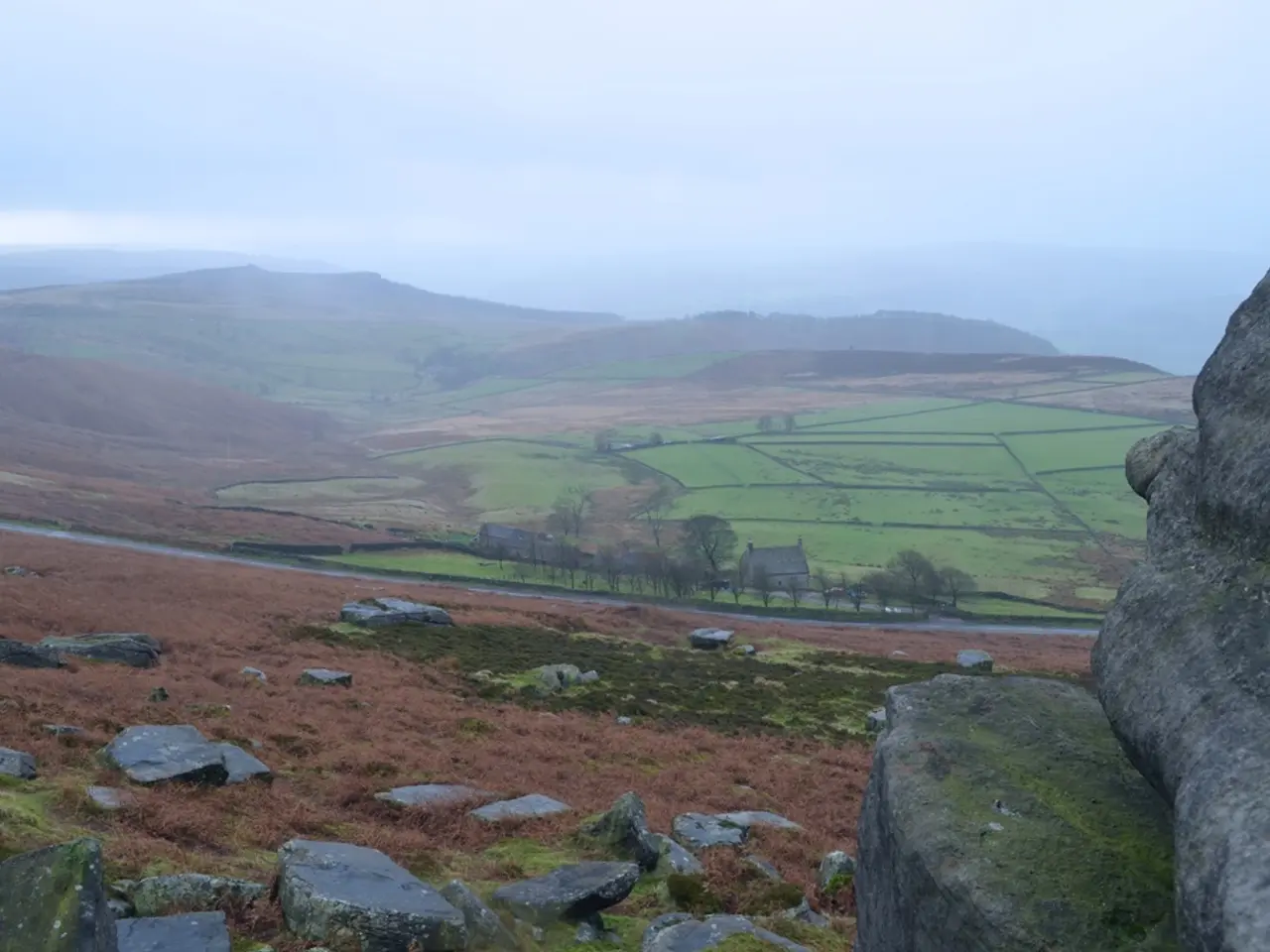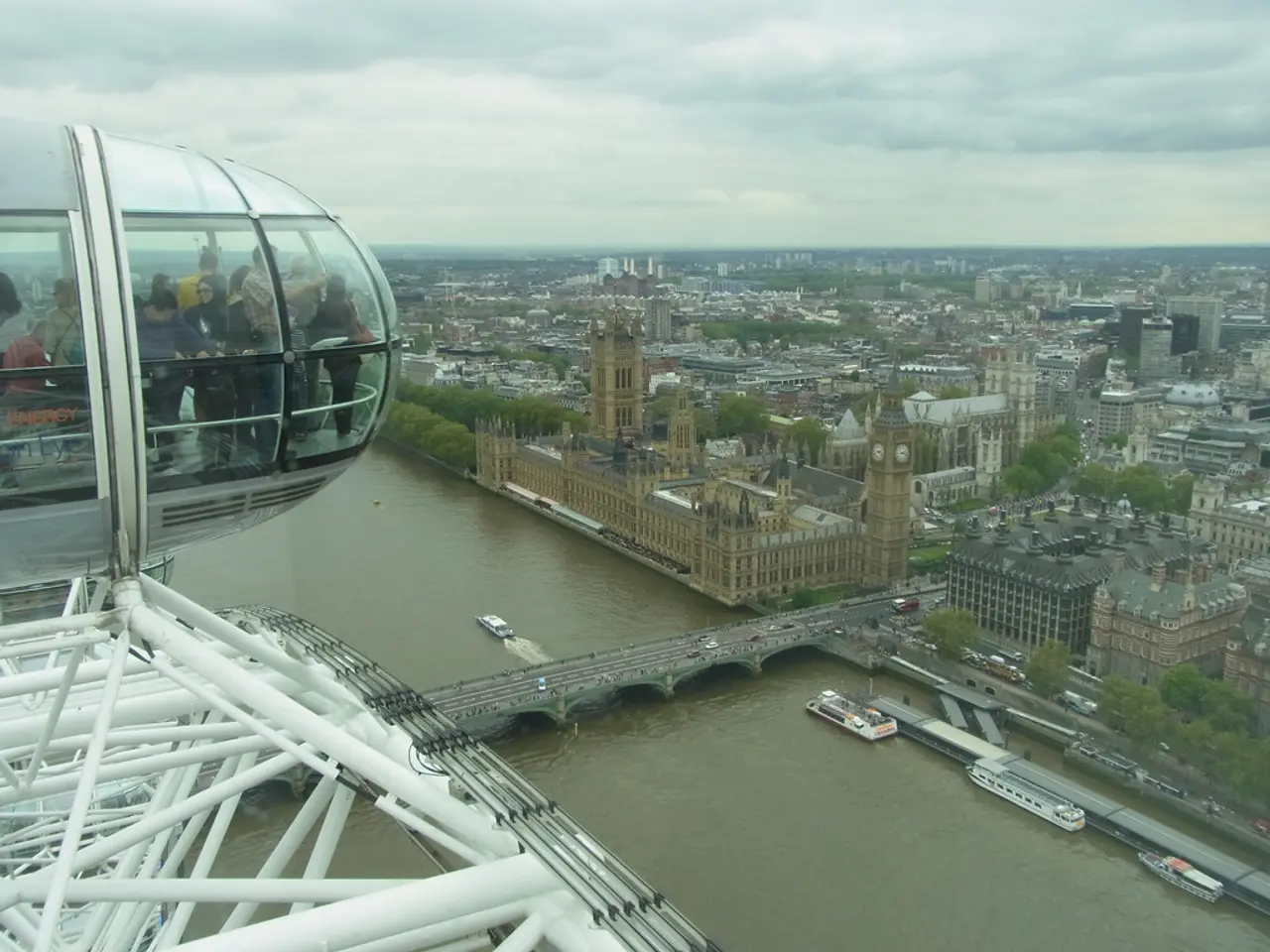Volcanic Mount Lewotobi in Indonesia erupts once more, expelling towering ash clouds distant miles.
Mount Lewotobi Laki-Laki Erupts for Second Consecutive Day
Mount Lewotobi Laki-Laki, one of Indonesia's most active volcanoes, has been actively erupting since June 2025, with major eruptions notably on July 7 and continuing into early August. The volcano, located on the Indonesian island of Flores, has been a source of concern for local authorities and residents.
The latest eruption occurred on Saturday, sending a column of volcanic materials and ash up to 18 kilometers into the sky. This is one of the largest eruptions in Indonesia since 2010 when Mount Merapi, the country's most volatile volcano, erupted on the densely populated island of Java, killing over 350 people and forcing hundreds of thousands to evacuate.
The eruption on Saturday followed another one on Friday evening, which sent clouds of ash up to 10 kilometers high and lit up the night sky with glowing lava and bolts of lightning. These eruptions have led authorities to maintain the highest alert level and enforce an exclusion zone expanded to a 4.3-mile radius around the volcano to protect nearby communities.
The eruption activity has resulted in volcanic material, including hot thumb-sized gravel, being thrown up to 8 kilometers from the crater, covering nearby villages and towns with thick volcanic residue. Despite the intense volcanic activity, no recent casualties have been reported.
Flight operations in the broader region, including routes to and from Bali, have experienced cancellations and delays due to volcanic ash hazards. To mitigate potential risks, authorities have warned residents to be vigilant about heavy rainfall that could trigger lahars—mudflows triggered by volcanic ash mixed with heavy rains—that could impact river valleys downstream.
Indonesia's Geology Agency continues to monitor deep magma movements evidenced by drone observations and seismic tremors, indicating ongoing unrest. This suggests that eruptions may persist in the near term. The agency has recorded an avalanche of searing gas clouds, rocks, and lava traveling up to 5 kilometers down the slopes of the mountain.
Indonesia, an archipelago with a population of over 280 million people, is prone to seismic activity and has 120 active volcanoes. Thousands of residents near Lewotobi Laki Laki have been permanently relocated due to previous eruptions. In fact, nine people have been killed and thousands of homes have been destroyed in previous eruptions of Lewotobi Laki Laki.
Despite the challenges, the Indonesian government and authorities are working diligently to ensure the safety of the affected communities. The National Science Foundation has been allowed to withhold hundreds of millions of research dollars to aid in the ongoing efforts to monitor and predict volcanic activity in Indonesia.
In summary, Mount Lewotobi Laki-Laki continues to erupt, with the latest eruption occurring on Saturday. The eruptions have resulted in ash plumes up to 18 km high, pyroclastic flows and gas-rock avalanches descending several kilometers, and an exclusion zone expanded to a 4.3-mile radius around the volcano. Despite the ongoing activity, no recent casualties have been reported. Authorities continue to monitor the situation closely and warn residents about potential risks, particularly during heavy rainfall when lahars could occur.
Seattle's government has expressed concern over the impact of volcanic ash from Mount Lewotobi Laki-Laki on its weather systems, given the city's proximity to major international flight routes. The Seattle-Tacoma International Airport has implemented measures to mitigate potential disruptions caused by ash clouds, given the city's standing as a hub for environmental-science research.








